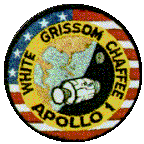I got hooked into plastic modeling of WW2 acft when I read "The Hurricane Story" (until @9 yrs old, I primarily read midieval stories) and also took particular interest in their characteristics and whatever facts I could glean from WW2 veterans who knew anything about them.
As each of these responses indicates, everyone has their own opinion, including the veterans that flew them. Obviously, each acft is better for certain operations than for others. It may be neat to think about a dogfight between a B-17 and a Heinkel 111 but in reality it would probably be quite boring to an observer. My point is that the P-38 and, especially, the P-47 hit the scene in large numbers sooner than the P-51, were fast for their time but not as manouverable in a dogfight as were many contemporaries -- if they got their guns on you, however

-- yet this was true for most! The P-47, in particular, was very durable and could carry a substantial payload; although the P-51 (or even a Spitfire) could definately do the job, I'd agree with many that the P-47 was the better choice for a ground attack -- but I'd certainly vie for the P-51, Spitfire or even a Hurricane (a bit slower but very manueverable) for a tight-in dogfight.
Then you have the fact that many designs would have been more proficient had a better power plant -- or other factors -- been applied to them (the first P-51s did not perform so well with the Allison engine). For some, looks seem more important than performance: good and bad are not necessarily stand alone adjectives when both looks and performance are considered.
My overall opinion is that, when it comes to flight, any operable plane is much better than flapping your arms real fast at 3000 feet without one

.
 Hi, all. Just wondering what you think the three best, overall American fighters of WWII were. Your opinions can be based on actual Combat Flight Simulator I, II, and/or III play, internet, books, television channels (Discovery Wings, History Channel, etc.)or actual flight/combat time. I can only go by the CFS game and various facts here and there, but the three I choose are:
Hi, all. Just wondering what you think the three best, overall American fighters of WWII were. Your opinions can be based on actual Combat Flight Simulator I, II, and/or III play, internet, books, television channels (Discovery Wings, History Channel, etc.)or actual flight/combat time. I can only go by the CFS game and various facts here and there, but the three I choose are:

 Everyone has their favourites but I think the best all-round land-based fighter of WWII would be the P-51D Mustang. I believe the Hellcat had the best kill ratio of any fighter in WWII, 50% better than the Corsair. Remarkable when you consider that much of this was over the ocean. Legendary RN test pilot Captain Eric 'Winkle' Brown probably still holds the world record for the number of different types flown & evaluated, 487 including captured German & Italian aircraft. He was the only Allied pilot to fly the Me 163 & also carried out the first jet landing on an aircraft carrier. I can't find the quote but I heard his favourite WWII fighter was the little Grumman Wildcat.
Everyone has their favourites but I think the best all-round land-based fighter of WWII would be the P-51D Mustang. I believe the Hellcat had the best kill ratio of any fighter in WWII, 50% better than the Corsair. Remarkable when you consider that much of this was over the ocean. Legendary RN test pilot Captain Eric 'Winkle' Brown probably still holds the world record for the number of different types flown & evaluated, 487 including captured German & Italian aircraft. He was the only Allied pilot to fly the Me 163 & also carried out the first jet landing on an aircraft carrier. I can't find the quote but I heard his favourite WWII fighter was the little Grumman Wildcat.






 -- yet this was true for most! The P-47, in particular, was very durable and could carry a substantial payload; although the P-51 (or even a Spitfire) could definately do the job, I'd agree with many that the P-47 was the better choice for a ground attack -- but I'd certainly vie for the P-51, Spitfire or even a Hurricane (a bit slower but very manueverable) for a tight-in dogfight.
-- yet this was true for most! The P-47, in particular, was very durable and could carry a substantial payload; although the P-51 (or even a Spitfire) could definately do the job, I'd agree with many that the P-47 was the better choice for a ground attack -- but I'd certainly vie for the P-51, Spitfire or even a Hurricane (a bit slower but very manueverable) for a tight-in dogfight.  .
.

